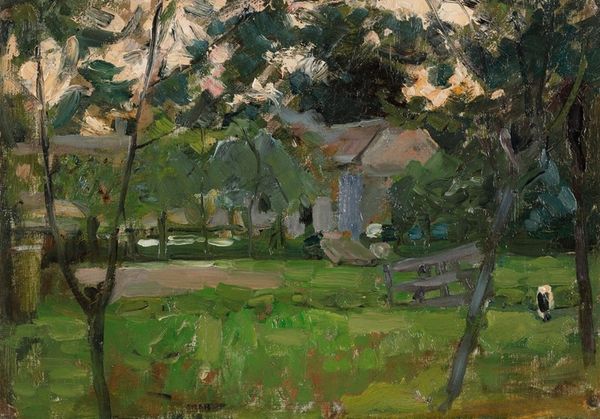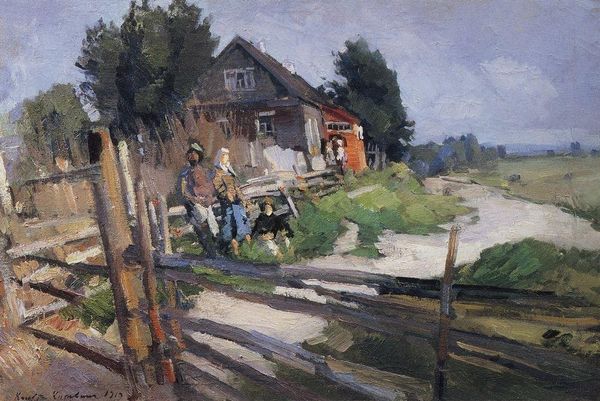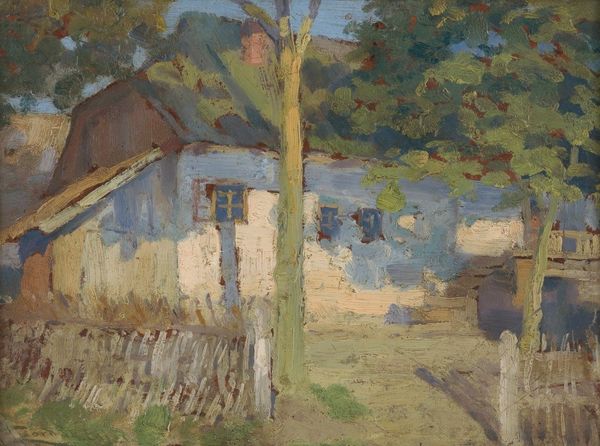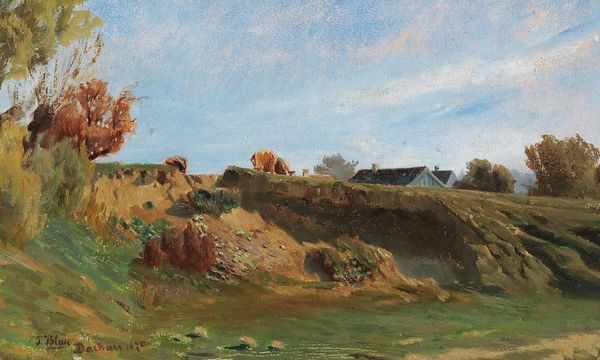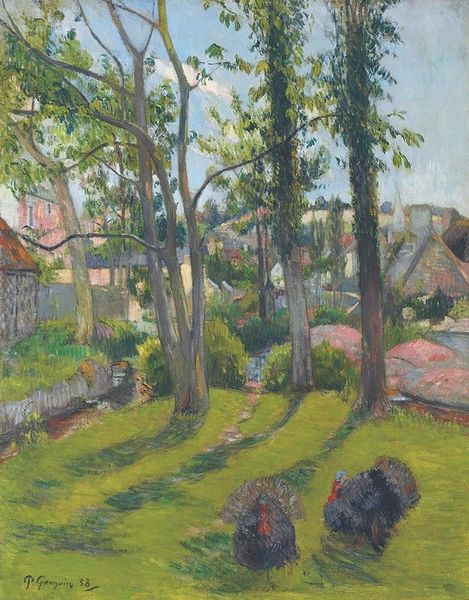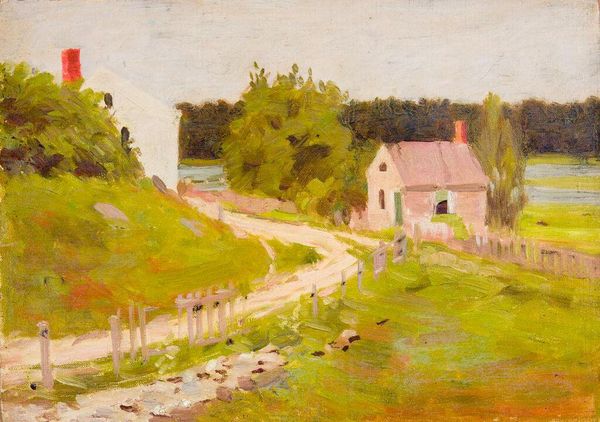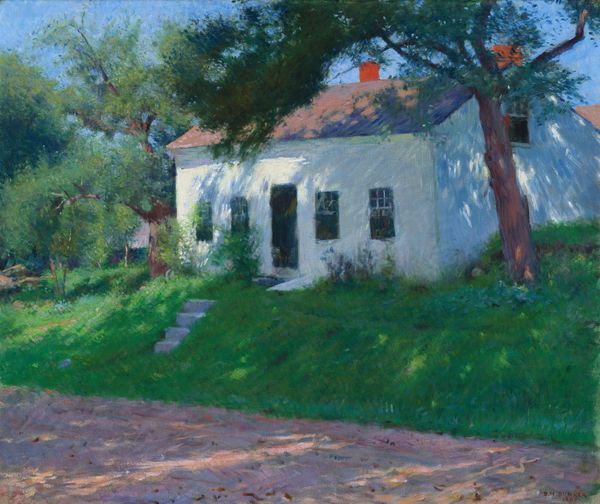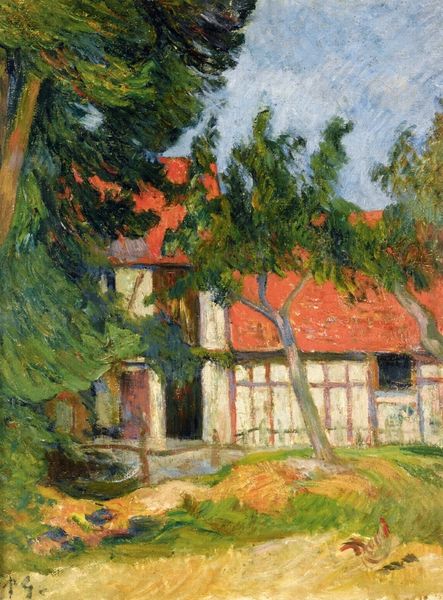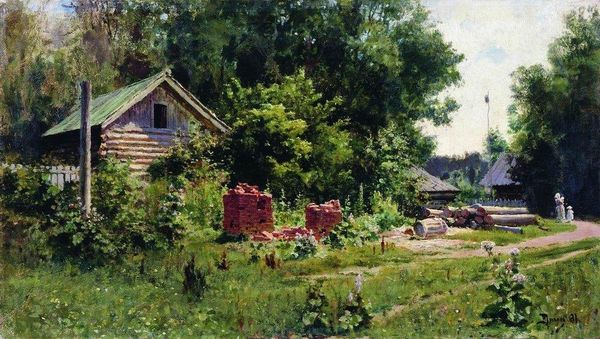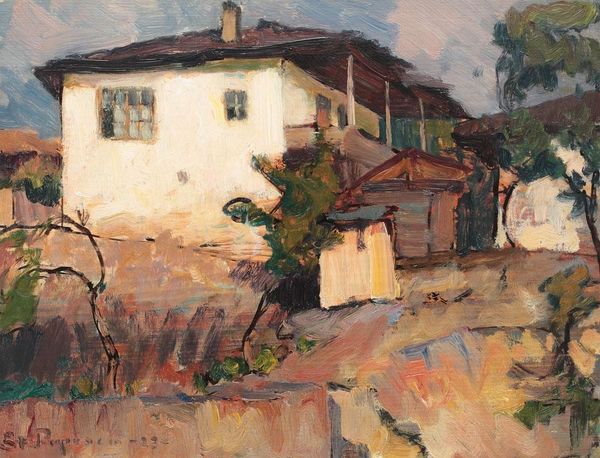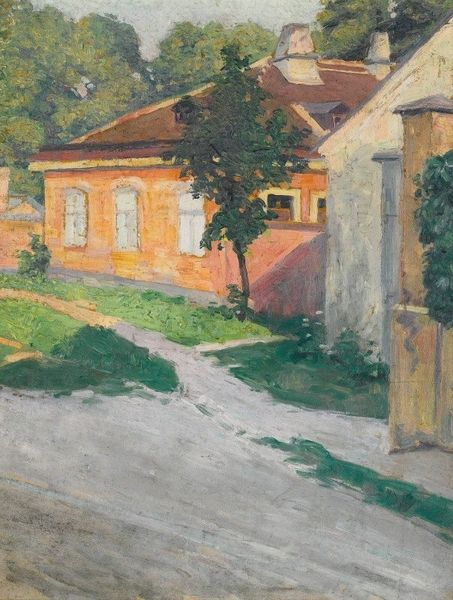
Copyright: Public domain
Curator: What a burst of light! There's an immediate sense of warmth and ease to it. Editor: Indeed. What we have here is Isaac Levitan's "Sunny Day. A Village," an oil painting from 1898 currently residing in the Tretyakov Gallery. It represents a pivotal point in the late 19th century with its engagement in Impressionistic style but also a step towards something distinctly Russian. Curator: The application of the oil-paint seems crucial here. Look how the pigment creates such distinct planes of sunlight and shadow; almost mosaic-like. Editor: Precisely! Levitan's materials play a significant role. Notice how the rough-hewn logs of the village structures contrast with the ethereal, almost fleeting rendering of light filtering through the trees. This dichotomy might reflect the realities of rural life at the time: enduring hardship met with moments of natural beauty. Consider how the acquisition and distribution of pigments and canvas affected artistic production during the late 19th century and beyond, and how the art market further impacted who could participate and who became celebrated. Curator: I am compelled to contextualize this within the larger Russian artistic landscape of the period. There was this longing for national identity through art. Editor: Absolutely. Think about the cultural weight that images like these carry; images meant to depict the Russian soul residing in rural life. Curator: One thing that grabs my attention is that there doesn't seem to be anyone actually doing any labor within the frame. Editor: This omission highlights the selective portrayal of rural life; it offers a vision steeped in national romanticism instead of depicting everyday labor and work in the fields. This highlights a carefully constructed public image rather than straightforward realism. Curator: Fascinating! It underscores how paintings like this navigated the space between observable reality and constructed artistic ideology. Editor: It makes me ponder the continuous relevance and reinterpretations this work will generate throughout different socio-political epochs. Curator: For me, I'm just drawn to its tangible connection to the Russian land. Editor: A compelling demonstration of the intricate layers involved in depicting, consuming, and comprehending national identity through art.
Comments
No comments
Be the first to comment and join the conversation on the ultimate creative platform.
